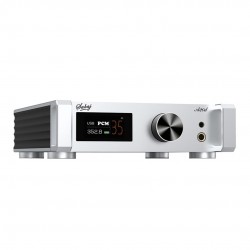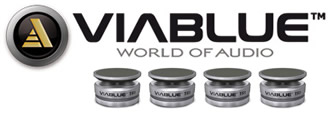New Customer?
Create your accountNo products
Prices are tax included
Test of the Sabaj A20D by Hans Beekhuyzen
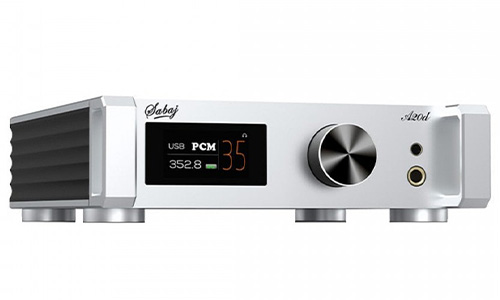
Discover Hans Beekhuyzen's test of the Sabaj A20d DAC / headphone Amplifier. This DAC / headphone Amplifier is based on the use of two DAC chips; an AK4499EX using Velvetsound technology and an AK4191EQ. A USB XMOS XU316 interface and an MQA decoder are also integrated into the A20d. This set of high-end components enables it to support high-resolution streams up to PCM 32bit 768kHz, native DSD up to DSD512 and MQA streams. On the headphone amplifier side, a TPA 611230A2 chip powers the two balanced and single-ended headphone outputs. Its three OPA1612 and RCA and XLR line outputs, with output levels of 2.3Vrms and 4.6Vrms respectively, allow it to be used as a preamplifier. High-performance and versatile, Sabaj's A20d also benefits from Bluetooth 5.0 connectivity. To sum up, Sabaj's A20d offers a multifunctional Hi-Fi device with high-end features, all at a relatively affordable price.
See the Sabaj A20d product sheet
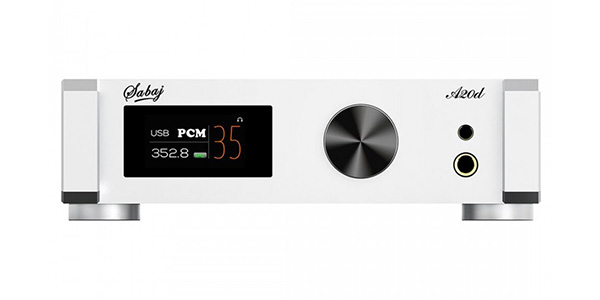
Sabaj A20d 2023
DAC AK4499EX Headphone amplifier TPA6120A2 XMOS XU316 Bluetooth 5.0 32bit 768kHz DSD512 MQA
Key points of the Sabaj A20d test by Hans Beekhuyzen
Possible Hi-Fi system configurations with the Sabaj A20d
The Sabaj A20d DAC can be paired with various devices for easy integration into a complete Hi-Fi system. It can work with a wide range of source devices, such as network players, CD players and televisions. Its headphone outputs enable the user to use this DAC directly for headphone listening. In addition, the level of its line outputs means it can be directly connected to a power amplifier for pairing with passive loudspeakers. A remote control is also supplied for a pleasant and convenient user experience.
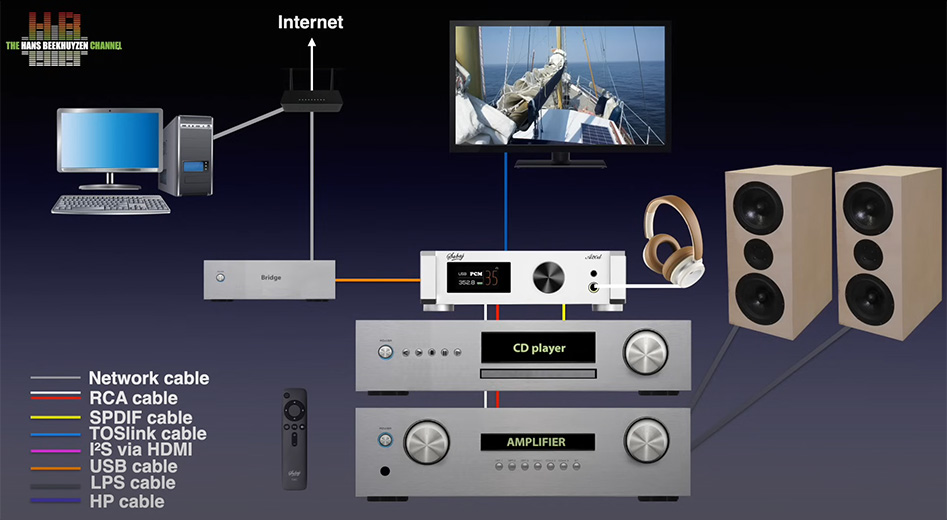
Overview of Sabaj A20d front and rear panels
On the front of the Sabaj A20d, you'll find a color screen displaying various information on the current playback, as well as a multifunction potentiometer and two headphone outputs: a balanced 4.4mm jack and a single-ended 6.35mm jack. The rear panel features three digital inputs: coaxial SPDIF, Toslink optical and USB-C, plus a Bluetooth antenna. Analog outputs include an RCA line output and an XLR balanced line output.
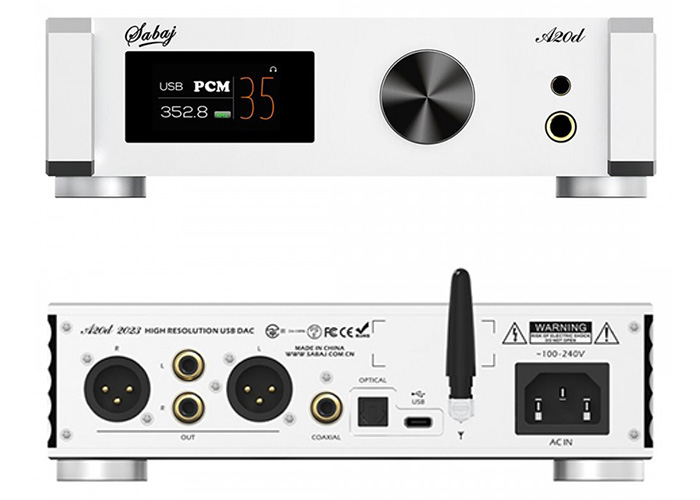
Sabaj A20d components
Inside the Sabaj, the circuit is made up of 5 main stages: the power supply stage, the system control stage, the digital input stage, the analog output stage and the headphone amplifier stage. Looking at the components in more detail, we find an XMOS XU316 USB interface, a Qualcomm Bluetooth receiver chip supporting aptX, aptX HD and LDAC transmission codecs, an AKM AK4191EQ DAC chip for the headphone outputs, an AKM AK4499EXEQ DAC chip for the line outputs, coupled with two OPA1612 for the XLR stereo output and one OPA1612 for the RCA stereo output. The headphone amplifier chip, a TI TPA6120A2, offers output power at 2x2W under 16Ω and 2x1W under 32Ω, with gain adjustment (high = +8dB / low = 0dB) to suit a wide range of headphones.
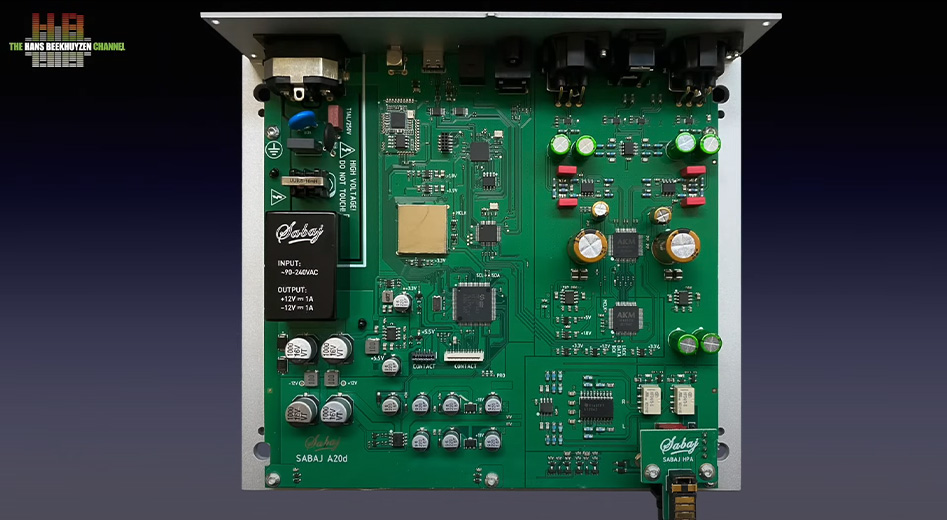
Support for high-resolution streams
The Sabaj A20d supports high-resolution streams via its various digital inputs. Naturally, the SPDIF and Optical inputs are restricted by their standards, but the USB input accepts up to PCM 32bit 768kHz, native DSD up to DSD512 and MQA 768kHz streams.
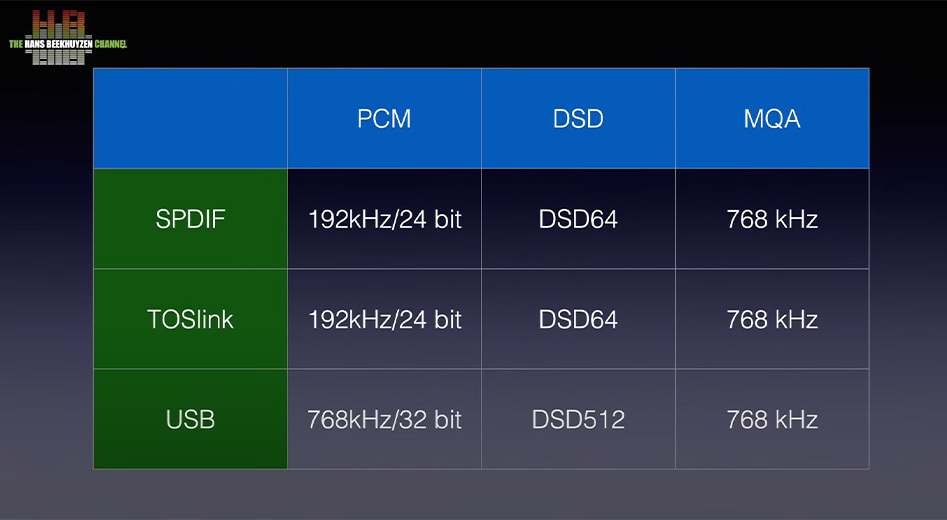
Filters and sound quality
Like most of today's DACs, the A20d incorporates PCM filters that can be activated via its menu. These filters allow you to obtain real differences in sound rendering, for a listening experience adapted to your preferences. Not only do these filters differ in their impulse pattern, but also in their level of distortion. According to Hans Beekhuyzen, all these filters sound pleasant, with the exception of the "super-slow" filter, which is too distorted.
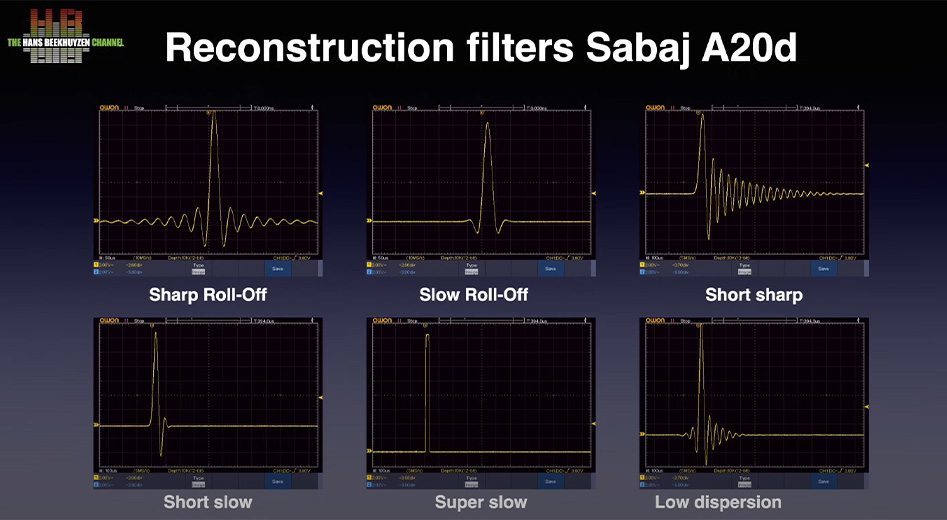 " width="947" height="520" />
" width="947" height="520" />Audio test: the final word
For his listening test, Hans Beekhuyzen chose to use the "short sharp" filter coupled with a Magna Hi-Fi network player running the Ruby Roon Endpoint software solution. Overall, the sound has a high level of detail, even if the stereo image could be a little wider. Midrange resolution is excellent, while treble and bass slightly less so. However, the level of sound quality for the advertised price remains exceptional.
Hans Beekhuyzen's tips for improving the sound quality of your Hi-Fi system:
- If you're using a playback software solution, you can reduce the volume level by 3dB here.
- You can also use your audio player's upsampling function; 44.1KhZ to 88.2 kHz (x2), 176.4kHz (x4) or 352.8kHz (x8) to simplify the work of the DAC's filters.
- Don't forget that your choice of network player/source streamer will have a major influence on the final sound.
Rechercher dans le blog
Blog categories
Latest Comments
Audiophonics Team
on DIY Tutorial - PiCorePlayer - Installing...Pierre Bommel
on Lecteur réseau Opensource : SolutionsPierre Bommel
on DIY Tutorial - PiCorePlayer - Installing...Audiophonics Team
on Tutorial DIY - Power cable ELECAUDIO CS-331B

